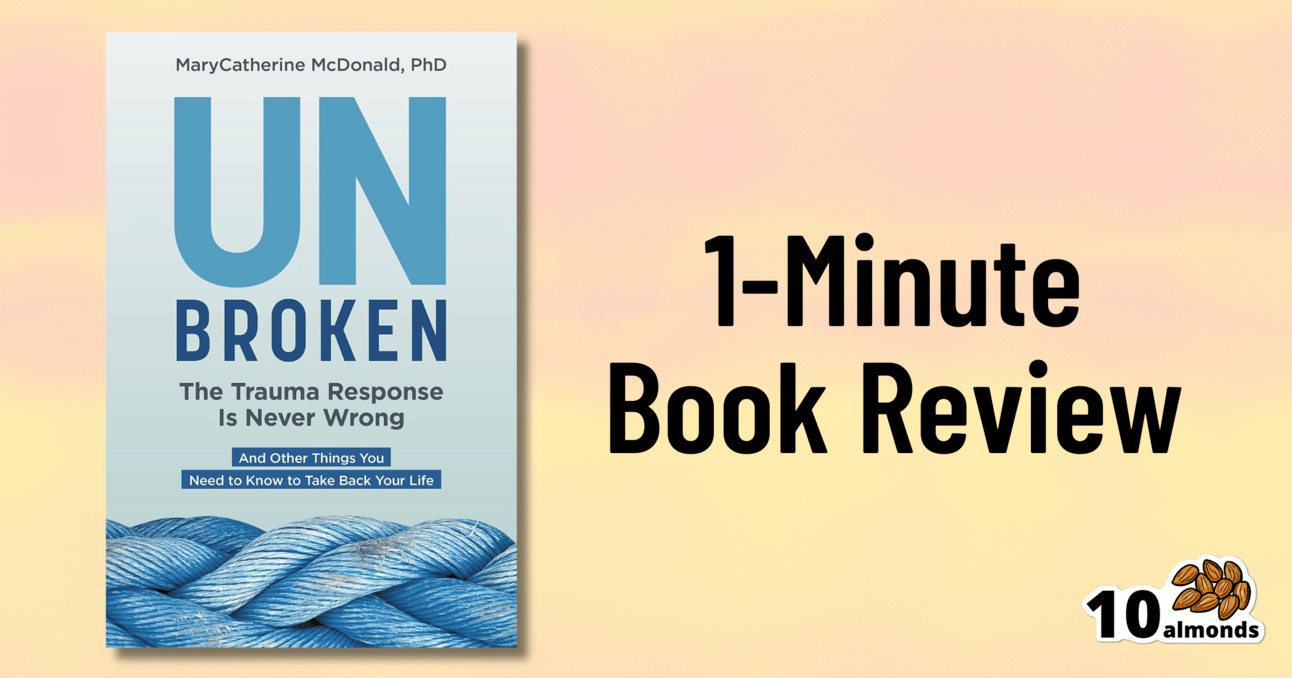
Fun fact: one of the reasons high intensity interval training (HIIT) works so well is that its stop-start nature confuses the body’s ability to optimize metabolic responses while exercising. Since it can’t ration its energy like it would in steady exercise, it is having to constantly adjust, which keeps the calorie burn rate higher.
Think of it like stopping and starting your car’s engine repeatedly—it uses a lot more gas than just idling.
⏰ IN A RUSH?
Today’s 30-Second Summary
If you don’t have time to read the whole email today, here are some key takeaways:
Hair loss can be a source of great malaise for men and women alike, as it is often viewed as a sort of loss of virility/femininity respectively, and is societally stigmatized in various ways.
There are many treatments on the market, but three heavy-hitters are finasteride, spironolactone, and minoxidil.
See today’s main feature for the pros and cons of each of these!
Bone broth is packed with nutrients, but the options tend to be “make it yourself” (which may involve eating much more meat than is healthy, to get the bones), or… Yeah, that’s pretty much it.
Today’s sponsor Brodo will ship many kinds of bone broth to your door! Their bone broths are made from scratch, with no additives, concentrates, or shortcuts.
Read on to learn more about these things, or click here to visit our archive
🤫 A WORD TO THE WISE
Don’t Get Stuck
In crisis, Kaleigh Rogers went to a mental health facility. Two years later, they still won’t let her out. This could happen to anyone:
👀 WATCH AND LEARN
The Big Think | Antidote To Aging
A group of experts discuss the kinds of exercise we should look to to slow and reverse aging:
You’ll notice that we’re now hosting these videos on our website, so that we can have room to provide a bit more context. Watch and enjoy!
YOU MAY HAVE MISSED…
Statins: His & Hers?
A Fresh Take On Hypothyroidism
Reduce Your Skin Tag Risk
🧓 MAIN FEATURE
10almonds Gets Hairy
Hair loss is a thing that at some point affects most men and a large minority of women. It can be a source of considerable dysphoria for both, as it’s often seen as a loss of virility/femininity respectively, and is societally stigmatized in various ways.
Today we’re going to focus on the most common kind: androgenic alopecia, which is called “male pattern baldness” in men and “female pattern baldness” in women, despite being the same thing.
We won’t spend a lot of time on the science of why this happens (we’re going to focus on the remedies instead), but suffice it to say that genes and hormones both play a role, with dihydrogen testosterone (DHT) being the primary villain in this case.
We’ve talked before about the science of 5α-reductase inhibitors to block the conversion of regular testosterone* to DHT, its more potent form:
*We all make this to a greater or lesser degree, unless we have had our ovaries/testes removed.
Finasteride
Finasteride is a 5α-reductase inhibitor that performs similarly to saw palmetto, but comes in tiny pills instead of needing to take a much higher dose of supplement (5mg of finasteride is comparable in efficacy to a little over 300mg of saw palmetto).
Does it work? Yes!
Any drawbacks? A few:
It’ll take 3–6 months to start seeing effects. This is because of the hormonal life-cycle of human hairs.
Common side-effects include ED.
It is popularly labelled/prescribed as “only for men”
On that latter point: the warnings about this are severe, detailing how women must not take it, must not even touch it if it has been cut up or crushed.
However… That’s because it can carry a big risk to our unborn fetuses. So, if we are confident we definitely don’t have one of those, it’s not actually applicable to us.
That said, finasteride’s results in women aren’t nearly so clear-cut as in men (though also, there has been less research, largely because of the above). Here’s an interesting breakdown in more words than we have room for here:
Spironolactone
This one’s generally prescribed to women, not men, largely because it’s the drug sometimes popularly known as a “chemical castration” drug, which isn’t typically great marketing for men (although it can be applied topically, which will have less of an effect on the rest of the body). For women, this risk is simply not an issue.
We’ll be brief on this one, but we’ll just drop this, so that you know it’s an option that works:
❝Spironolactone is an effective and safe treatment of androgenic alopecia which can enhance the efficacy when combined with other conventional treatments such as minoxidil.
Topical spironolactone is safer than oral administration and is suitable for both male and female patients, and is expected to become a common drug for those who do not have a good response to minoxidil❞
Minoxidil
This one is available (to men and women) without prescription. It’s applied topically, and works by shortcutting the hair’s hormonal growth cycle, to reduce the resting phase and kick it into a growth phase.
Does it work? Yes!
Any drawbacks? A few:
Whereas you’ll remember finasteride takes 3–6 months to see any effect, this one will have an effect very quickly
Specifically, the immediate effect is: your rate of hair loss will appear to dramatically speed up
This happens because when hairs are kicked into their growth phase if they were in a resting phase, the first part of that growth phase is to shed each old hair to make room for the new one
You’ll then need the same 3–6 months as with finasteride, to see the regrowth effects
If you stop using it, you will immediately shed whatever hair you gained by this method
Why do people choose this over finasteride? For one of three reasons, mainly:
They are women, and not offered finasteride
They are men, and do not want the side effects of finasteride
They just saw an ad and tried it
As to how it works:
Some final notes:
There are some other contraindications and warnings with each of these drugs by the way, so do speak with your doctor/pharmacist. For example:
Minoxidil is a hypotensive; this shouldn’t be an issue for most people, but for some people it could be a problem
There are other hair loss remedies and practices, but the above three are the heavy-hitters, so that’s what we spent our time/space on today. We’ll perhaps cover the less powerful (but less risky) options one of these days.
Meanwhile, take care!
YOU MAY HAVE MISSED…
Optimism Seriously Increases Longevity!
Why Curcumin (Turmeric) Is Worth Its Weight In Gold
Taurine’s Benefits For Heart Health And More
❤ OUR SPONSORS MAKE THIS PUBLICATION POSSIBLE
Shop the best broth on the planet.
From scratch, no concentrates, no preservatives, no shortcuts.
Now in a convenient package you can store in your pantry!
Created by James Beard award-winning chef Marco Canora
Beloved by NYC since 2014
8 grams of protein and 50 calories
Holistic gut and skin health
No preservatives, concentrates, or short cuts.
Please do visit our sponsors—they help keep 10almonds free
Browse By Category
📖 ONE-MINUTE BOOK REVIEW
Unbroken: The Trauma Response Is Never Wrong: And Other Things You Need to Know to Take Back Your Life – by Dr. MaryCatherine McDonald
We’ve reviewed books about trauma before, so what makes this one different? Mostly, it’s the different framing.
Dr. McDonald advocates for a neurobiological understanding of trauma, which really levels the playing field when it comes to different types of trauma that are often treated very differently, when the end result in the brain is more or less the same.
Does this mean she proposes a “one-size fits all” approach? Kind of!
Insofar as she offers a one-size fits all approach that is then personalized by the user, but most of her advices will go for most kinds of trauma in any case. This is particularly useful for any of us who’ve ever hit a wall with therapists when they expect a person to only be carrying one major trauma.
Instead, with Dr. McDonald’s approach, we can take her methods and use them for each one.
After an introduction and overview, each chapter contains a different set of relevant psychological science explored through a case study, and then at the end of the chapter, tools to use and try out.
The style is very light and readable, notwithstanding the weighty subject matter.
Bottom line: if you’ve been trying to deal with (or avoid dealing with) some kind(s) of trauma, this book will doubtlessly contain at least a few new tools for you. It did for this reviewer, who reads a lot!
What did you think of today's newsletter?
May you have as much or as little hair as you want,
The 10almonds Team







